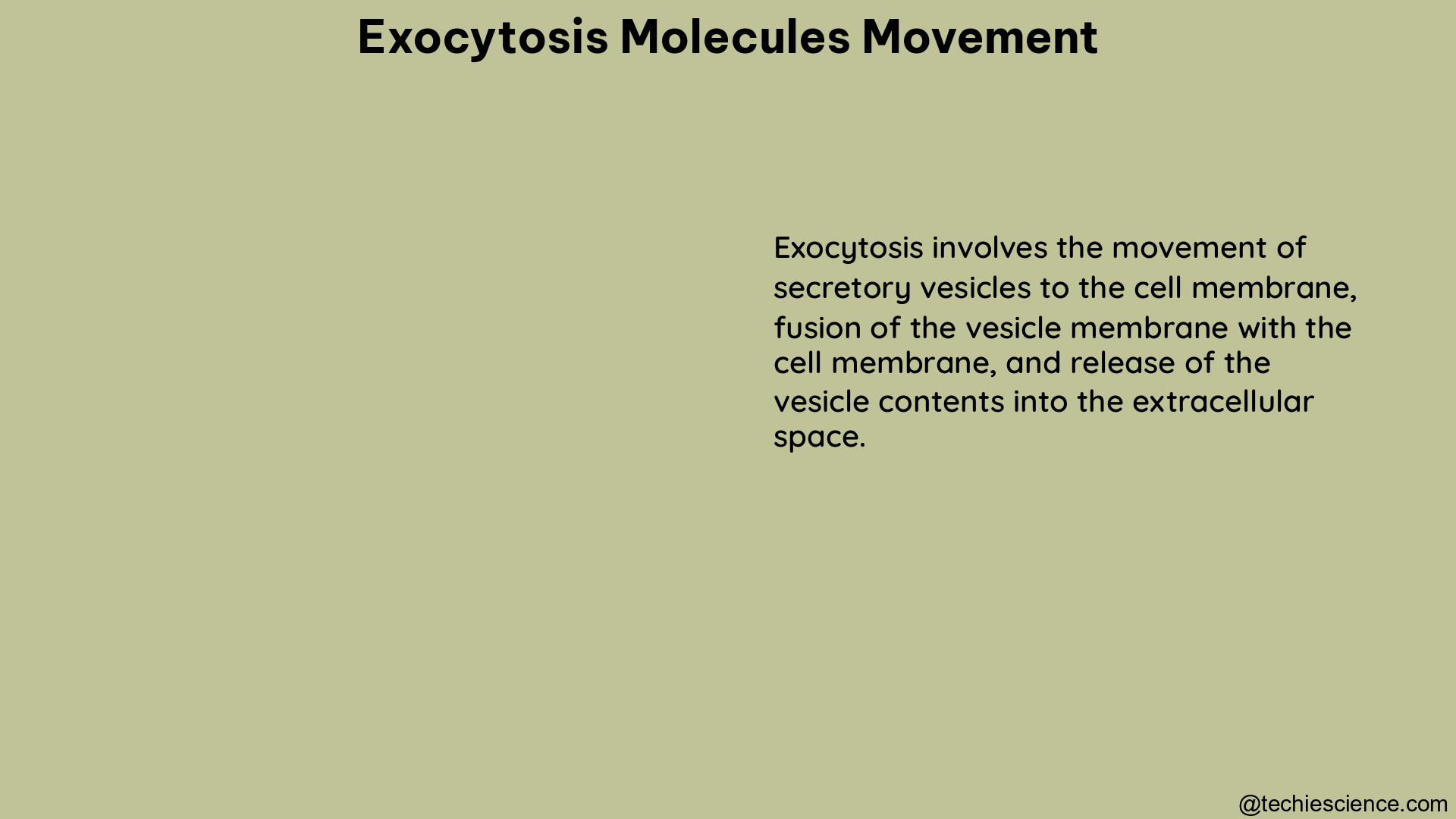Exocytosis is a fundamental cellular process that involves the movement of molecules from the interior of a cell to the exterior through the fusion of a vesicle containing the molecules with the plasma membrane. This process is crucial for various cellular functions, including the secretion of hormones, neurotransmitters, and extracellular matrix proteins. Understanding the intricate details of exocytosis molecules movement is essential for researchers and students in the field of cell biology.
Membrane Fluidity and Exocytosis
One of the key factors that influence the movement of molecules during exocytosis is membrane fluidity. Membrane fluidity refers to the ability of lipids and proteins in the membrane to move laterally and diffuse within the plane of the membrane. The fluidity of the membrane is determined by the composition of lipids, including cholesterol, and the presence of proteins.
Role of Cholesterol in Membrane Fluidity
Studies have shown that membrane cholesterol plays a critical role in exocytosis. For example, a study using platelets, a type of secretory cell, found that membrane cholesterol content is naturally decoupled from the quantal size, or the amount of serotonin contained in the dense granules. This decoupling allows for the selective examination of the membrane-derived driving forces and the cholesterol influence on exocytosis.
| Membrane Cholesterol Content | Quantal Size (Serotonin) |
|---|---|
| Naturally Decoupled | Allows Selective Examination of Membrane-Derived Driving Forces and Cholesterol Influence on Exocytosis |
Interplay between Granule Membrane and Granule Content
Another study using chromaffin cells, a type of secretory cell, found that the interplay between the granule membrane and the granule content during exocytosis can act as the main driving force for further membrane fusion. However, this interplay can make it difficult to selectively examine the membrane-derived driving forces and the cholesterol influence on exocytosis. This difficulty is exacerbated when carbon-fiber microelectrochemistry techniques are employed, as these techniques measure exocytosis based on the outward flux of stored electroactive molecules.
- Interplay between Granule Membrane and Granule Content:
- Can act as the main driving force for further membrane fusion
-
Makes it difficult to selectively examine the membrane-derived driving forces and the cholesterol influence on exocytosis
-
Difficulty Exacerbated by Carbon-Fiber Microelectrochemistry Techniques:
- Measure exocytosis based on the outward flux of stored electroactive molecules
- Complicates the selective examination of membrane-derived driving forces and cholesterol influence
Size and Charge of Molecules in Exocytosis

In addition to membrane fluidity, the size and charge of molecules also influence their movement during exocytosis. This is particularly important when considering the different mechanisms of molecular uptake by the cell.
Phagocytosis and Pinocytosis/Potocytosis
Large molecules and particles require energy to be taken up by the cell through a process called phagocytosis, while small molecules can be taken up through a process called pinocytosis or potocytosis.
- Phagocytosis:
- Uptake of large molecules and particles
-
Requires energy
-
Pinocytosis/Potocytosis:
- Uptake of small molecules
- Does not require as much energy as phagocytosis
Charge and Molecular Movement
The charge of molecules can also influence their movement during exocytosis. Positively charged molecules may interact more strongly with the negatively charged plasma membrane, affecting their rate of release or uptake. Conversely, negatively charged molecules may experience repulsive forces, altering their movement patterns.
Conclusion
In summary, the movement of molecules during exocytosis is influenced by several factors, including membrane fluidity, the size and charge of molecules, and the energy requirements of the process. Membrane cholesterol plays a critical role in exocytosis by influencing membrane fluidity and the interplay between the granule membrane and the granule content. Understanding these complex mechanisms is essential for researchers and students in the field of cell biology, as it provides insights into the fundamental processes that govern cellular function and communication.
References:
– Membrane Transport and Cell Signaling
– Cholesterol Regulation of Exocytosis and Endocytosis
– Endocytosis and Exocytosis
Hi….I am Ashish Nandal, I have completed my Master’s in Biotechnology. I always like to explore new areas in the field of Biotechnology.
Apart from this, I like to read, travel, and photography.